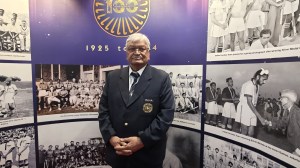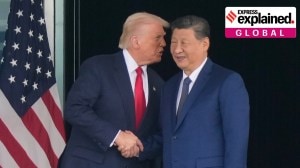India’s Silver spindle
AS the Indian textile market gears up for the post-quota regime from January 1, 2005, there’s world that’s waiting to be conquered...

AS the Indian textile market gears up for the post-quota regime from January 1, 2005, there’s world that’s waiting to be conquered. More specifically, there’s a $ 400 billion export market at stake.
The other country eyeing the opportunity is China. Going by a World Trade Organisation forecast, India and China are expected to corner nearly two-thirds of the world textile market share by 2010. China will get the cream — a hefty 50 per cent — India will have to be happy with 15 per cent.
In absolute numbers, that’s still big money. But it’s not India’s for the asking. Indian companies need to do their groundwork.
Estimates by the Planning Commission and consultancy KSA Technopak say an investment of at least Rs 90,000 crore is required in the next three to five years. The Indian Cotton Mills Federation assesses Rs 140,000 crore needs to be invested in the textile sector by 2010 — to merely double India’s share in the global trade, from the present three per cent to six per cent.
DESPITE the daunting numbers, textile industry players are a mix of cautious and unbridled optimism. Some of those The Sunday Express spoke to have already lined up major investment and expansion plans. They complain though of poor infrastructure — in the form of road and port bottlenecks, and restrictive labour laws.
Here’s a journey through the Indian textile-scape, to understand its twists and turns. And figure out its navigation plans for the brave new voyage that begins with the new year.
ABHISHEK Industries: RAJINDER Gupta, managing director (MD) of the Ludhiana- based Abhishek Industries, started off with a Rs 2 crore business in 1985. His aim for 2006 is a turnover of Rs 2,000 crore, a calculation largely driven by the opportunity the post-quota regime offers.
With an additional investment of Rs 550 crore over the next two years, Gupta is looking to pushing up exports from Rs 200 crore in 2004 to Rs 500 crore by 2005. By September 2005, Abhishek Industries will add another 40,000 spindles to its existing 82,000.
The company’s flagship product is terylene towels. Its 112 looms produce 9,000 tonnes. This will go up to 282 looms and almost 40,000 tonnes in two years.
Gupta has been preparing for the post-quota era. For three years, he’s reinvested all his dividend, right down to Rs 60 crore towards an infotech department. From January, its payback time.
WELSPUN: WITH plans to diversify into new segments in bed linen, Welspun’s capital investment between December 2004 and March 2005 is a generous Rs 575 crore. Its plant in Vapi, Gujarat, produces 11,000 tonnes of terylene towels — 34 per cent cleaned up by mass retailers like Wal Mart and KMart. A second plant in Anjar, coastal Gujarat, opens shortly.
The second plant will double towel production to 24,000 tonnes. It will also lead Welspun’s foray into bed linen. Given this, Welspun hopes to double its sales from Rs 420 crore to Rs 800 crore by 2005-06.
The company’s core strength is terylene towels, an astonishing 94 per cent of revenue coming from exports. ‘‘About 60 per cent capacity is booked till mid-2005 with export orders,’’ said Rajesh Mandawewala, Welspun’s MD. No wonder he can’t stop smiling.
Having cautiously spread 250 crores over the past 15 years in modernisation, the company (turnover: Rs 415 crore) is alive to volume-driven exports too. ‘‘We do not have any immediate expansion plans. We have been expanding in a staged manner in the pre-quota regime, much ahead of other players,’’ says R.K. Dalmia, company president.
Century produces around 350,000 square metres of cloth and 55,000 kg of cotton yarn daily. It does see opportunity after January 1, but Dalmia warns that stringent labour laws and poor infrastructure could sour Indian dreams.
CREATIVE GROUP: THIS Mumbai-based group’s annual turnover of Rs 350 crore is expected to grow by 30 to 40 per cent post-January 1, 2005. With Rs 30 crore invested since 2000, the group is now looking to backward integration as a growth catalyst. ‘‘With the removal of quotas, in new markets the margins are bound to get squeezed. Hence we have decided to take a cautious approach,’’ says Rahul Mehta, MD, Creative Group.
There are no big plans to buy machines or hire manically. ‘‘Our production has quadrapled from 100,000 garment pieces two years ago to 400,000 garment pieces,’’ said Mehta. He indicates a further increase will come only when the market expands correspondingly. No adventurism here.
Alok Industries: THIS is one company that’s all about numbers. In 2005, it has a capex (capital expenditure) programme of Rs 580 crore. In 2003-04 its turnover was Rs 1,069 crore — a 34.47 per cent increase over the previous year. Exports went up four times, to Rs 111 crore from Rs 27 crore.
There’s a novel HR initiative as well. Two thousand tribal women are being inducted into Alok’s Silvassa plant. It’s all preparatory to the big date on January 1.
Dilip Jiwrajka, MD, Alok Industries, is gung ho about the PQ (post-quota) era. ‘‘There’s enough room for more players,’’ he says. Even so, he has two complaints. First: ‘‘There is a major mindset among banks and lending institutions about textiles being a non-performing sector. They seem reluctant to lend capital.’’ Second, says Jiwrajka, do something about the traffic jam at the Mumbai and Jawaharlal Nehru (Nhava Sheva) ports.
With 65-odd stitching factories vying for space and government incentives galore, Tirupur should be primed for the post-quota charge. But one man is not sure. ‘‘The government,’’ says Premal Udani, ‘‘needs to give more attention to this sector. Or we will lose out on the growth explosion that is bound to happen with the removal of quotas.’’
Udani is MD of Kaytee Corporation, a vertically-integrated unit with a Rs 85 crore turnover. His knitted garments dress adults and children across the United States, the European Union and Canada. Post-quotas, these three markets will give him more space.
‘‘In the next six months, an additional Rs 6 crore will be infused as capex,’’ says Udani. He’s ready to hire more people, but — and here is his big complaint — warns that impractical and inflexilbe labour laws could stymie a small unit such as his.
MATRIX CLOTHING: THE Rs 75 crore Gurgaon-based Matrix Clothing exports both knitted and woven garments. It has the Greg Norman clothing brand, Reebok and Old Navy among its clients. Gautam Nair, Matrix’s MD, is leaving nothing to chance between now and January. In the past year, his company has invested a strong Rs 25 crore.
Matrix’s big focus is the EU. Describing his export basket, Nair says, ‘‘From 90 per cent US and 10 per cent EU, we want to shift to 60 per cent US and 40 per cent EU.’’
Over the next year, Nair grins, his company’s manufacturing capacity will shoot up from 200,000 tonnes to 300,000 tonnes. And that, he says, is only step one.After all, there’s a whole world out there — just waiting to be dressed up.





- 01
- 02
- 03
- 04
- 05


























